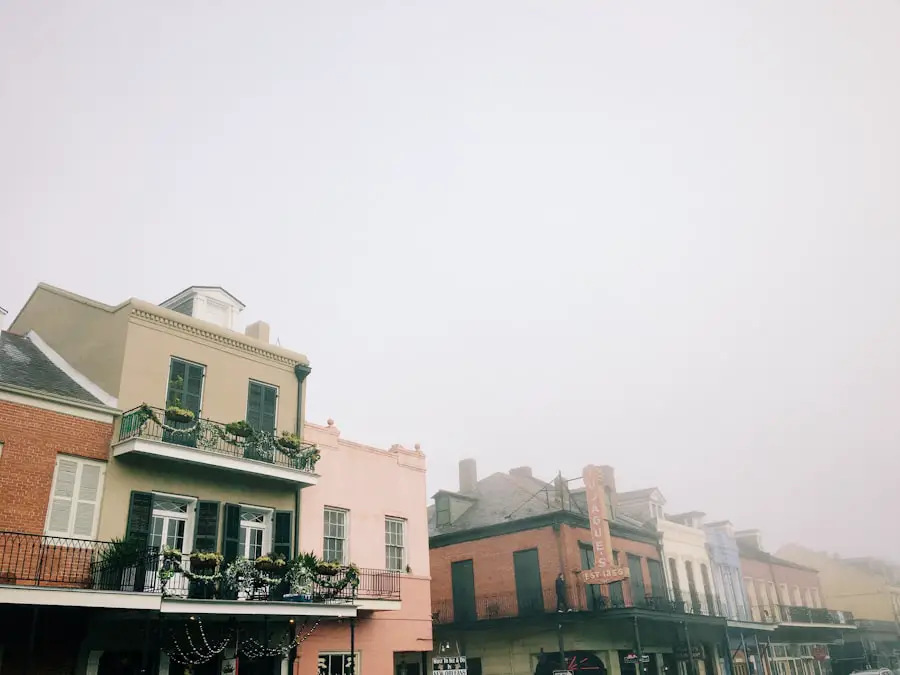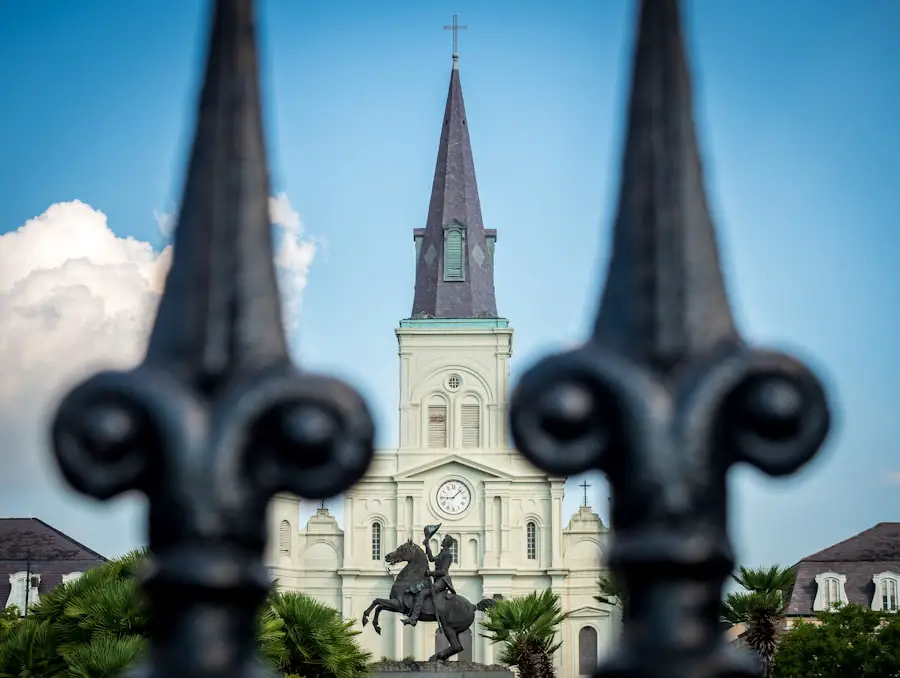New Orleans, a city renowned for its vibrant culture, rich history, and lively music scene, faces a myriad of safety concerns that have garnered attention in recent years. The juxtaposition of its festive atmosphere with underlying issues of crime and public safety creates a complex environment for both residents and visitors. One of the most pressing concerns is violent crime, particularly in certain neighborhoods where incidents of robbery, assault, and homicide have been reported at alarming rates.
The city’s unique socio-economic challenges, including poverty and unemployment, contribute to these issues, making it imperative for local authorities to address the root causes of crime while ensuring the safety of its citizens and tourists alike. In addition to violent crime, property crimes such as burglary and theft are prevalent in New Orleans. Tourists, often distracted by the city’s attractions, can become easy targets for pickpockets and scammers.
The prevalence of these crimes has led to heightened awareness among law enforcement agencies, which have implemented various strategies to combat crime. However, the perception of safety remains a significant concern for many, as incidents can occur in areas that are otherwise considered safe. This dichotomy between perception and reality necessitates a nuanced understanding of the city’s safety landscape, prompting both residents and visitors to remain vigilant while enjoying all that New Orleans has to offer.
Key Takeaways
- New Orleans faces safety concerns related to crime, natural disasters, and health precautions.
- Crime rates in New Orleans are high, but the city has implemented safety measures such as increased police presence and community policing.
- Travelers to New Orleans should be aware of safety tips such as staying in well-lit areas and avoiding isolated areas at night.
- Health and safety precautions in New Orleans include being mindful of the heat and humidity, staying hydrated, and protecting against mosquito-borne illnesses.
- Natural disaster preparedness in New Orleans is crucial, with residents and visitors advised to have a plan in place for hurricanes and flooding.
Crime Rates and Safety Measures in New Orleans
Fluctuating Crime Rates and Challenges
The crime rates in New Orleans have fluctuated over the years, with certain periods witnessing spikes in criminal activity. According to the FBI’s Uniform Crime Reporting Program, New Orleans consistently ranks among cities with higher rates of violent crime compared to national averages. For instance, the city has faced challenges with gun violence, which has been a significant contributor to its homicide rate.
Law Enforcement Response and Initiatives
In response to these alarming statistics, local law enforcement agencies have adopted various safety measures aimed at curbing crime and enhancing community safety. One notable initiative is the implementation of community policing strategies, which emphasize building relationships between law enforcement officers and the communities they serve.
Targeted Efforts and Partnerships
Additionally, the New Orleans Police Department has increased patrols in high-crime areas and established task forces focused on specific issues such as gang violence and drug-related crimes. These efforts are complemented by partnerships with community organizations that provide resources and support for at-risk youth, aiming to address the underlying factors contributing to criminal behavior.
Safety Tips for Traveling to New Orleans

Traveling to New Orleans can be an exhilarating experience filled with music, food, and culture; however, it is essential for visitors to remain aware of their surroundings and take precautions to ensure their safety. One of the most effective strategies is to stay informed about the areas you plan to visit. Researching neighborhoods ahead of time can help travelers identify which areas are known for higher crime rates and which are considered safe for exploration.
Utilizing online resources, such as travel forums or local news outlets, can provide valuable insights into current safety conditions. Another crucial tip for travelers is to practice situational awareness. This means being mindful of your surroundings, especially in crowded places like the French Quarter or during major events such as Mardi Gras.
Keeping personal belongings secure and avoiding displaying valuables can significantly reduce the risk of theft. Additionally, it is advisable to travel in groups whenever possible, as there is safety in numbers. Engaging with locals can also enhance the travel experience; they often have firsthand knowledge of safe routes and hidden gems that may not be on typical tourist itineraries.
Health and Safety Precautions in New Orleans
| Category | Metrics |
|---|---|
| COVID-19 Cases | Number of confirmed cases in New Orleans |
| Vaccination Rate | Percentage of population vaccinated in New Orleans |
| Mask Mandate | Current status of mask mandate in public spaces |
| Social Distancing | Guidelines for maintaining social distancing in public places |
| Sanitization Protocols | Measures taken for regular sanitization of public areas |
Health and safety precautions are vital considerations for anyone visiting New Orleans. The city’s warm climate can pose health risks such as heat exhaustion or dehydration, particularly during the summer months when temperatures can soar. Visitors should ensure they stay hydrated by drinking plenty of water and taking breaks in shaded areas or air-conditioned spaces when necessary.
Wearing appropriate clothing that protects against sun exposure is also advisable, especially for those planning to engage in outdoor activities. In addition to climate-related health concerns, travelers should be aware of potential health risks associated with food and water safety. New Orleans is famous for its culinary delights; however, it is essential to choose reputable restaurants and street vendors to avoid foodborne illnesses.
Travelers should also be cautious about drinking tap water; while it is generally safe in most areas, opting for bottled water can provide an extra layer of assurance. Furthermore, staying up-to-date on vaccinations and health advisories before traveling can help mitigate health risks associated with infectious diseases that may be more prevalent in certain regions.
Natural Disaster Preparedness in New Orleans
New Orleans is situated in a region prone to natural disasters, particularly hurricanes and flooding. The city’s geographical location along the Gulf Coast makes it vulnerable to severe weather events that can lead to significant damage and disruption. As such, preparedness is crucial for both residents and visitors alike.
Understanding the hurricane season, which typically runs from June 1 to November 30, is essential for anyone planning a trip during this time frame. Travelers should monitor weather forecasts closely and be aware of evacuation routes and emergency plans established by local authorities. In addition to hurricanes, flooding poses a significant risk in New Orleans due to its low-lying topography.
The city has invested heavily in infrastructure improvements aimed at mitigating flood risks, including levees and drainage systems. However, visitors should remain vigilant during heavy rainfall or storms and heed any warnings issued by local officials. Familiarizing oneself with emergency procedures and having a plan in place can make a substantial difference in ensuring safety during unexpected weather events.
Safe Areas and Neighborhoods in New Orleans

The French Quarter: A Safe Haven for Visitors
The French Quarter, famous for its historic architecture and vibrant nightlife, is one of the most popular destinations in the city. While it can get crowded and lively, it is also heavily patrolled by law enforcement, making it relatively safe for visitors who remain aware of their surroundings.
Discover the Charm of the Garden District
Another area known for its safety is the Garden District, characterized by its picturesque streets lined with oak trees and stunning mansions. This neighborhood offers a more tranquil atmosphere while still being close to popular attractions.
Uptown New Orleans: A Safe and Welcoming Community
Uptown New Orleans is often regarded as a safe area with a strong sense of community. Visitors can enjoy local shops, restaurants, and parks while feeling secure in their surroundings. Researching neighborhoods before visiting can help travelers identify safe areas that align with their interests.
Transportation Safety in New Orleans
Navigating New Orleans can be an adventure in itself, but understanding transportation safety is crucial for a smooth experience. The city offers various transportation options, including streetcars, buses, taxis, and rideshare services like Uber and Lyft. While public transportation is generally safe during daylight hours, travelers should exercise caution when using these services late at night or in less populated areas.
Opting for well-lit stops and waiting for rides in busy locations can enhance personal safety. For those who prefer walking or biking around the city, it is essential to remain vigilant while navigating traffic. New Orleans has a unique street layout that may be confusing for newcomers; therefore, using maps or navigation apps can help prevent getting lost or inadvertently wandering into less safe areas.
Additionally, wearing bright clothing or reflective gear while biking can increase visibility to drivers. Overall, being aware of your surroundings while using any mode of transportation will contribute significantly to a safer experience.
Emergency Contacts and Resources in New Orleans
In any city, knowing how to access emergency services is vital for ensuring personal safety. In New Orleans, dialing 911 will connect you with emergency responders for police assistance, fire services, or medical emergencies. It is advisable for travelers to familiarize themselves with local hospitals or urgent care facilities before their trip; this knowledge can be invaluable if medical attention is needed unexpectedly.
Beyond emergency services, various resources are available for those seeking assistance or information while in New Orleans. The New Orleans Visitor Information Center provides helpful resources for tourists regarding safety tips, local attractions, and emergency contacts. Additionally, local law enforcement agencies often have community outreach programs designed to educate residents and visitors about safety measures within the city.
Keeping these contacts handy can provide peace of mind while exploring all that New Orleans has to offer.
If you are planning a trip to New Orleans and are concerned about staying warm during your visit, you may want to consider investing in a rechargeable hand warmer for travel. These handy devices can provide much-needed warmth on chilly days as you explore the city’s vibrant streets and historic sites. For more travel gear recommendations, check out this article on the best sleeping bag for backpacking travel.
FAQs
Is New Orleans safe for tourists?
New Orleans is generally safe for tourists, but like any major city, it is important to be aware of your surroundings and take necessary precautions.
What are the safest areas to visit in New Orleans?
Popular tourist areas such as the French Quarter, Garden District, and Uptown are generally considered safe for visitors. It is always advisable to stay in well-lit and populated areas, especially at night.
Are there any areas to avoid in New Orleans?
While New Orleans has many safe and vibrant neighborhoods, there are some areas that are known for higher crime rates. It is recommended to avoid certain parts of Central City, New Orleans East, and parts of the 9th Ward.
What safety precautions should I take while visiting New Orleans?
Visitors to New Orleans should take common safety precautions such as being aware of their surroundings, not displaying valuables openly, and avoiding isolated areas at night. It is also advisable to use reputable transportation services and to be cautious of pickpockets in crowded areas.
Is it safe to travel to New Orleans alone?
Traveling to New Orleans alone can be safe as long as visitors take necessary precautions and stay aware of their surroundings. It is always a good idea to let someone know your itinerary and to stay in well-populated areas.

